Entangle. Physics and the Artistic Imagination, a book edited by Ariane Koek, with essays by science writer Philip Ball, Ariane Koek, art historian Gavin Parkinson, physicist Carlo Rovelli, curator and historian Nicola Triscott. Graphic design by Maria Persson.
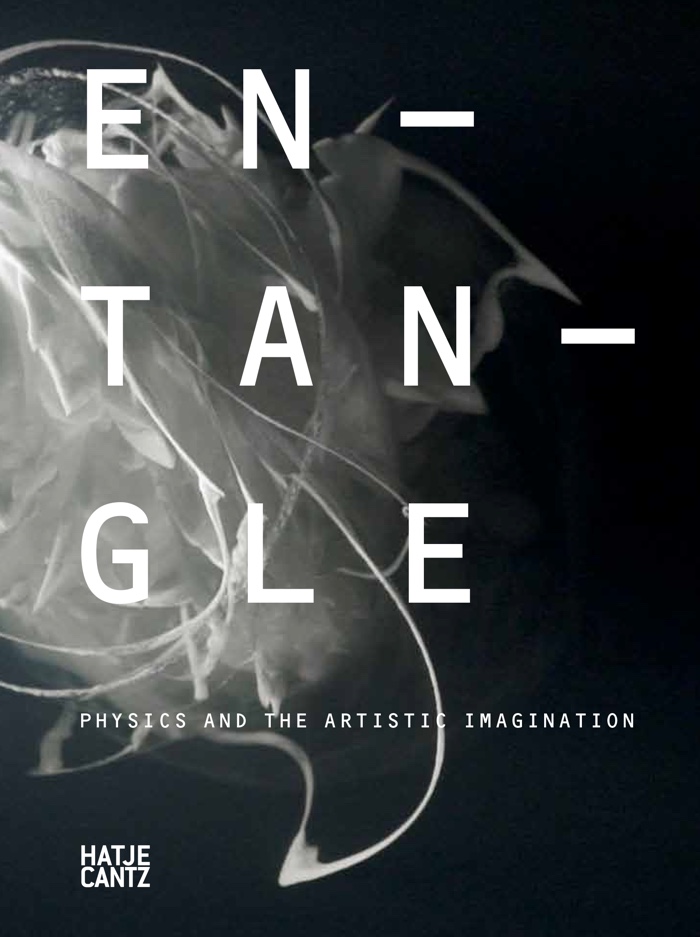
Publisher Hatje Cantz writes: Black holes, dark matter, gravity, time, motion—these phenomena fascinate physicists and artists alike. Both strive to discover how they shape our world. The connection between art and science is gaining increasing significance in contemporary art.
Now, the influence of physics on today’s art, design, and architecture is being more closely examined. Curated by Ariane Koek, the founder of the arts program Arts at CERN, the exhibition Entangle – Physics and the Artistic Imagination and its companion catalog present the works of fourteen contemporary artists who are inspired by physics and its investigation of natural phenomena. Besides their works, this ground-breaking publication also contains interviews with the artists and physicists who share their different ways of seeing.
Julius von Bismarck, Freedom Table & Democracy Chair at IMO gallery Copenhagen in 2013
Entangle. Physics and the Artistic Imagination is the catalogue of the exhibition that closed recently at Bildmuseet in Umea, Sweden. I haven’t seen the show alas but the book is an enlightening substitute for the museum experience.
Whether they are physicists or curators, the contributors of the book have an uncanny talent to communicate, in limpid and approachable terms, their enthusiasm for particle physics and other seemingly abstruse concepts. In her introductory essay, curator Ariane Koek articulates the mutual benefits physics and art can draw from each other. Physicists, she argues, allow artists to observe the world under a new lens. Conversely, artists allow all of us to see the world under a different light and help us make sense of our place in the world. Both expand our horizons, make use of imagination and don’t hesitate to probe the limits of knowledge.
Her point is illustrated further in the book by a series of duos of short texts in which one artist and one scientist present their own understanding and experience of a specific natural phenomenon or concept: gravity, matter, space, entropy, etc.
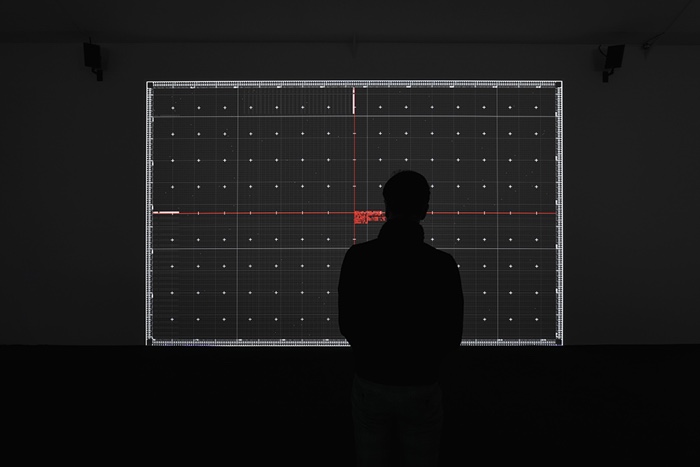
Ryoji Ikeda, data.tron [WUXGA version], 2011
Theoretical physicist Carlo Rovelli wrote a fascinating essay about quantum physics in which he explains the notion of ‘entanglement’. You have to hold on tight but his stories of traveling gloves and subtle connections make the whole experience rewarding.
Philip Ball makes the case for the importance of imagination, dreams, patience and failure in physics. He also has some interesting remarks about the dangers of a society where big data threatens to take precedence over knowledge. Gavin Parkinson recounts the Surrealists’s fascination with physics. Nicola Triscott shares her experience of bringing physics into the wider cultural experience and the arts into scientific practices (you can read more about it in the book she edited together with Fiona Crisp The Live Creature and Ethereal Things: Physics in Culture.)
Entangle. Physics and the Artistic Imagination presents insights and ideas that were new and exciting for me, challenged my perception of the world and pushed my imagination to places i would otherwise never enter. I still fantasize about a passage in one of the essays that explained that it’s not because we haven’t seen white holes that we shouldn’t imagine their existence.
Quick list of some of the works i discovered in the book:
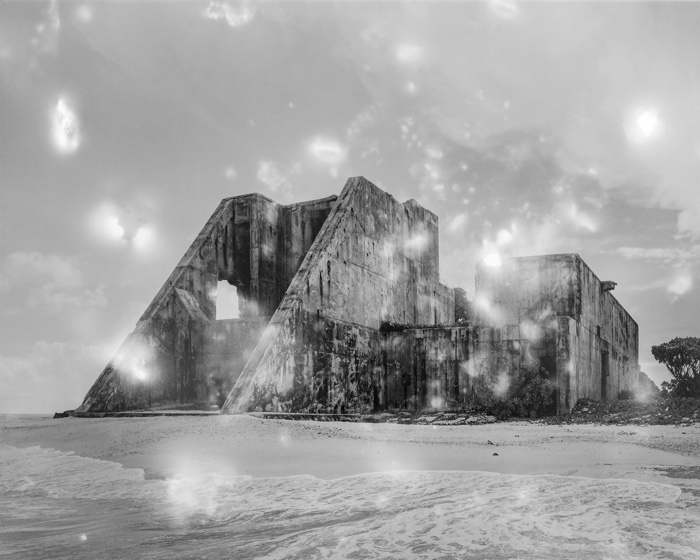
Julian Charrière, Terminal Beach (Aomen II), 2016
Julian Charrière’s series Second Suns examines the post-nuclear landscapes and the architecture on the Bikini atoll, a group of islands that the U.S. used as an atomic bomb test site between 1946 and 1958. The artist’s photos of concrete bunkers and other decaying infrastructures are “corrupted” by grains of sand from the atoll’s still-radioactive beaches. The grains were placed on the negatives while they were developed, leaving behind their eerie, glowing marks on the picture.
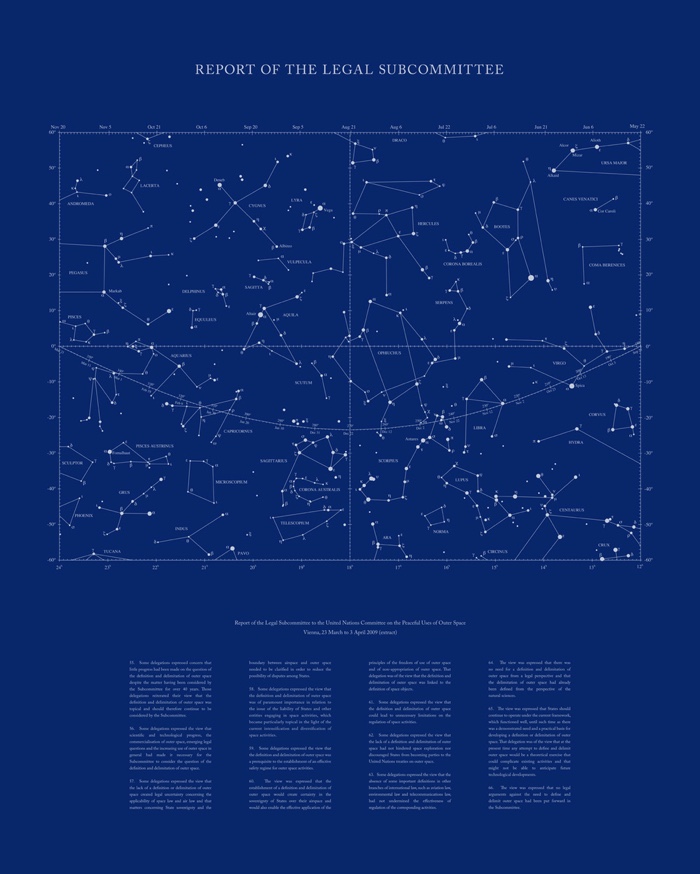
Carey Young, Report of the Legal Subcommittee, 2010
A print featuring a map of the stars, together with a found transcription of a United Nations meeting in which international delegations declare frustration with their 40-year-old, ongoing efforts to devise a legal definition of outer space.
This admission seems to hold a rich poetic potential, the human attempts to bureaucratize and control outer space seemingly frustrated by the sublime scale and mystery of its infinite depths.
Entangle. Physics and the Artistic Imagination. Video produced by Bildmuseet
Solveig Settemsdal, Singularity, 2016
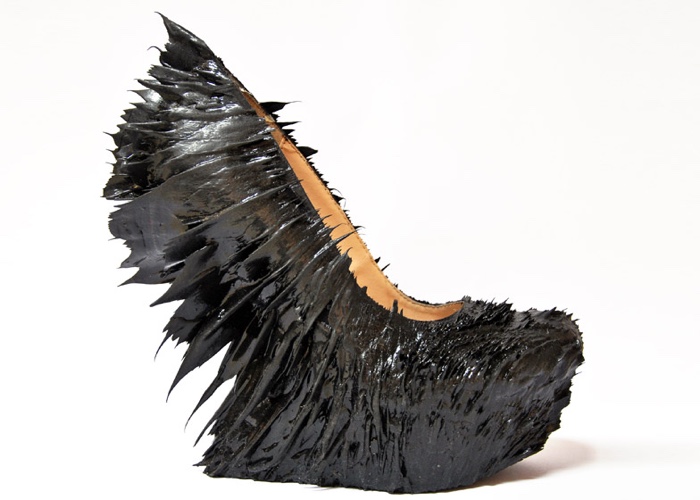
Iris van Herpen, Magnetic Motion shoes, 2015
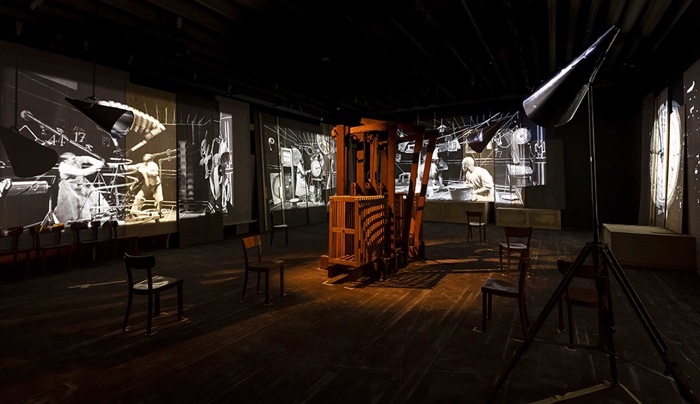
William Kentridge, The Refusal of Time (installation view), Bildmuseet 2018
